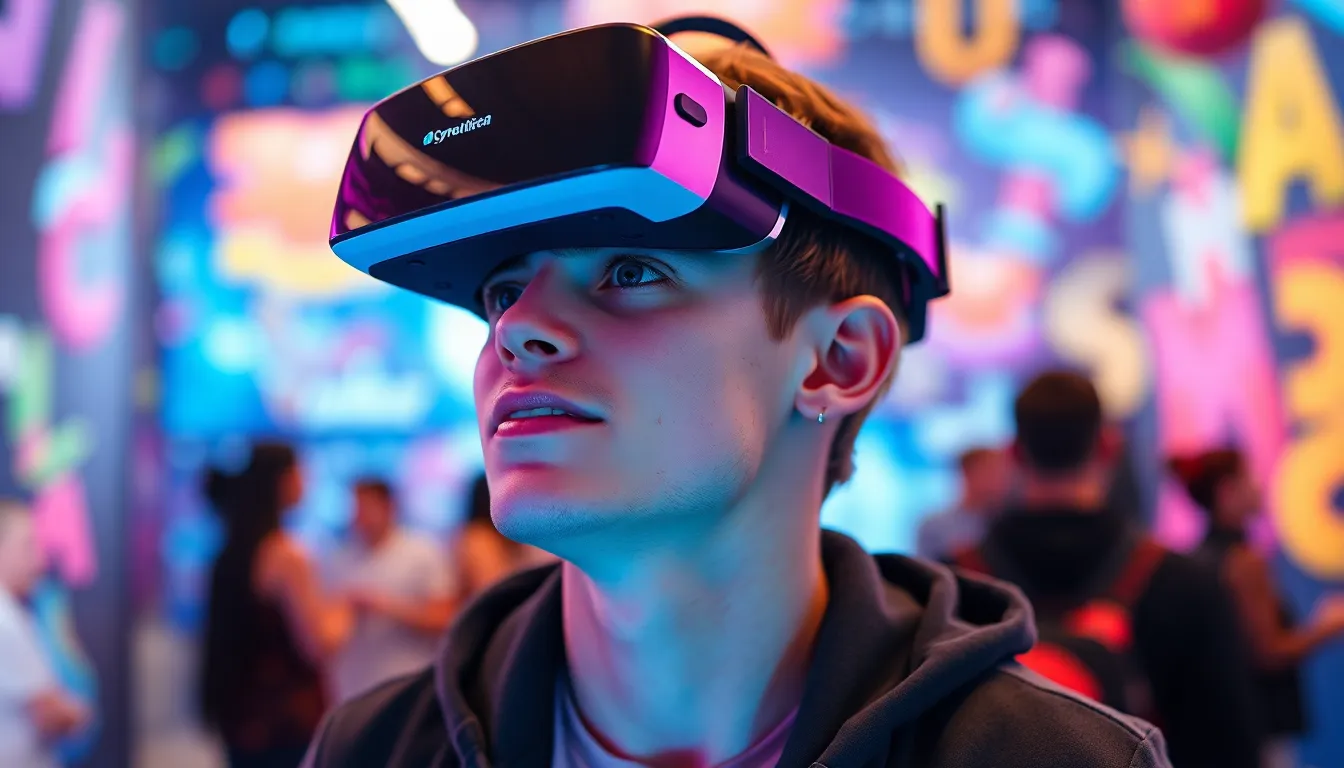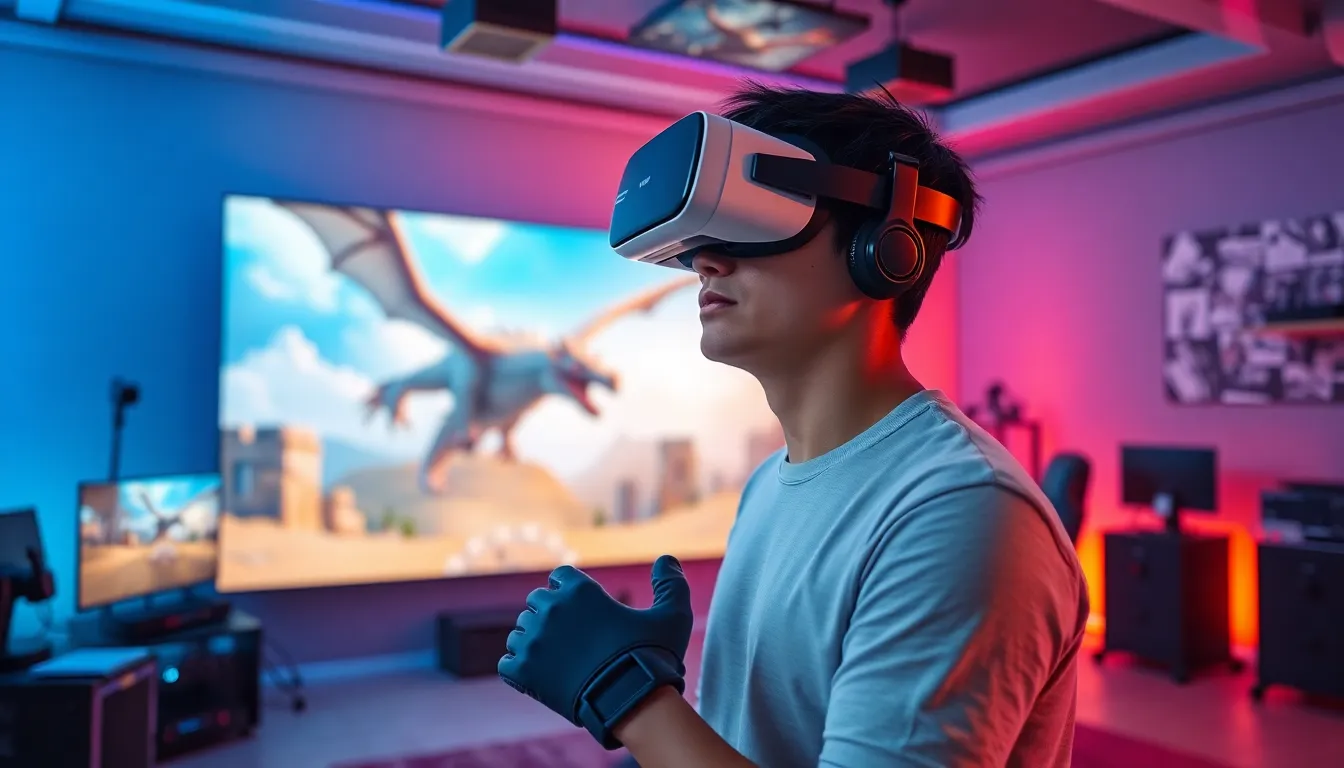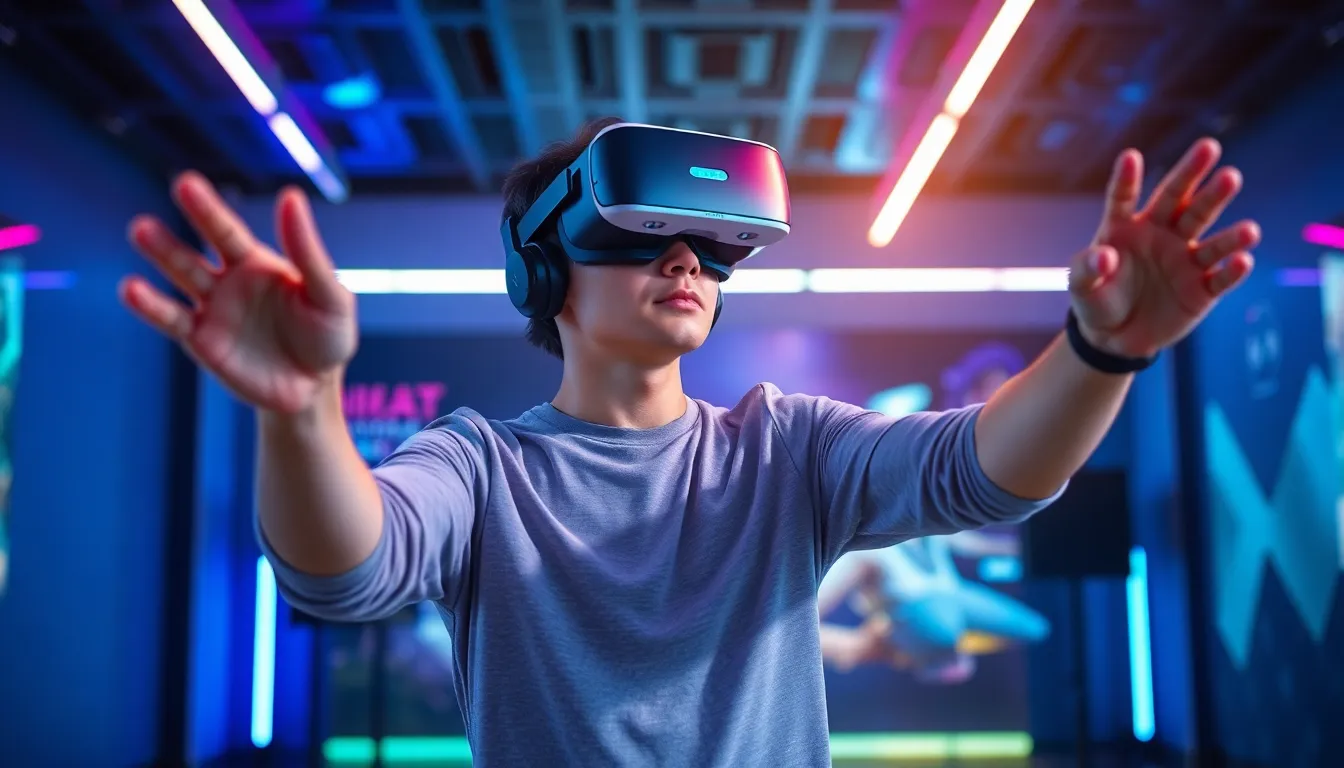In a world where reality sometimes feels a bit too mundane, immersive gaming experiences are the ultimate escape hatch. Picture this: you’re not just playing a game; you’re stepping into a universe where dragons roam and space battles rage. It’s like living in a blockbuster movie, minus the overpriced popcorn.
Table of Contents
ToggleUnderstanding Immersive Gaming Experiences
Immersive gaming experiences captivate players by transporting them to realistic or fantastical settings. These experiences create emotional connections, making games more than just entertainment.
Definition and Importance
Immersive gaming refers to a genre that fully engages players through interactive environments and compelling narratives. These games foster a sense of presence, allowing individuals to remain detached from reality. The significance lies in their ability to enhance player engagement and satisfaction, often resulting in extended gameplay. Research indicates that immersion leads to stronger emotional responses, making experiences memorable. Developers continue to prioritize immersive elements, knowing that an engrossing environment keeps players returning.
Key Components
Several key components contribute to the effectiveness of immersive gaming. First, graphics quality plays a crucial role; high-resolution visuals elevate realism and enhance player connection. Second, sound design enriches the atmosphere, using audio cues to guide players through experiences. Third, interactivity remains essential; players engage with environments, altering outcomes through choices made. Lastly, narrative depth captivates audiences; strong storylines provide context and motivation, encouraging exploration and emotional investment. Together, these components create cohesive, engaging platforms that define the immersive gaming landscape.
Types of Immersive Gaming Experiences

Immersive gaming experiences come in various forms, each utilizing unique technologies to engage players.
Virtual Reality
Virtual reality (VR) transports players into fully realized 3D environments. Utilizing headsets such as Oculus Rift or HTC Vive, VR allows players to interact with their surroundings. Through motion tracking, players can physically move and manipulate objects within games. VR creates an unparalleled sense of presence, making the gaming experience feel lifelike. Popular titles like “Beat Saber” and “Half-Life: Alyx” showcase how immersive VR can redefine gameplay standards.
Augmented Reality
Augmented reality (AR) blends real-world environments with digital elements. By using devices like smartphones or tablets, AR overlays virtual graphics onto the physical world. This approach offers innovative gameplay that encourages exploration, such as “Pokémon GO,” where players capture creatures in their own neighborhoods. Engagement increases as players navigate the real world and interact with both physical and virtual components. The combination fosters unique social experiences, drawing players together in familiar settings.
Mixed Reality
Mixed reality (MR) combines aspects of both VR and AR, creating a transformative gameplay experience. Players can engage with digital objects in their immediate surroundings while still remaining aware of their physical environment. Microsoft’s HoloLens exemplifies MR technology, allowing players to manipulate holograms as though they exist in real space. This technology enhances interaction and storytelling, offering distinct possibilities in gaming narratives. By merging the virtual with the real, mixed reality blurs the lines between different worlds, engaging players uniquely.
Technology Behind Immersive Gaming
Immersive gaming relies on advanced technology that creates engaging experiences. The integration of hardware and software is vital for delivering these dynamic environments.
Hardware Requirements
High-performance computers or consoles power immersive gaming experiences. VR headsets like the Oculus Quest 2 and Valve Index facilitate lifelike interactions in fully realized 3D spaces. Graphics cards, such as the NVIDIA GeForce RTX 3080, enhance visuals, ensuring smooth and realistic gameplay. Additional accessories like motion controllers contribute to interactivity, allowing players to perform complex actions within virtual worlds. Sound systems, including surround sound headphones, provide auditory cues that deepen immersion. The combination of these hardware elements forms the backbone of immersive gaming, enabling the technology to enhance player engagement.
Software Innovations
Innovative software plays a crucial role in creating immersive gaming experiences. Game engines like Unity and Unreal Engine enable developers to craft stunning graphics and seamless interactions. Artificial intelligence enhances NPC behavior, making interactions more realistic. Advanced physics engines simulate real-world mechanics, adding depth to gameplay. Augmented reality applications, such as ARKit and ARCore, allow digital elements to overlay in real-world scenes, enriching the player’s environment. Continuous updates to these technologies ensure that immersive gaming evolves, maintaining high levels of engagement and excitement for players.
Impact on Players
Immersive gaming profoundly influences players through emotional engagement and social interaction. These aspects enhance the overall gaming experience, making it memorable and impactful.
Emotional Engagement
Players form deep emotional connections with characters and narratives in immersive games. High-quality storytelling draws players into the plots, evoking feelings of joy, fear, or sadness. For instance, a gripping narrative can lead players to invest their emotions, fostering a sense of attachment to characters. Moments of triumph or loss resonate, making gameplay more meaningful. These emotional stakes boost player satisfaction, resulting in longer play sessions and increased enjoyment overall.
Social Interaction
Social interaction within immersive gaming encourages collaboration and competition among players. Multiplayer modes often create a sense of community as players team up to complete quests or challenge each other. For example, cooperative games allow friends to join forces, enhancing teamwork and communication skills. Players build friendships and connections that extend beyond the game itself. Such interactions facilitate shared experiences, impacting how players perceive their gaming journeys.
Future Trends in Immersive Gaming
Innovations in immersive gaming continue to reshape player experiences, driven by advancements in technology and evolving market demands.
Emerging Technologies
New technologies play a crucial role in enhancing immersion. Cloud gaming enables high-quality experiences without the need for expensive hardware, making gaming accessible to a broader audience. Additionally, developments in haptic feedback create realistic sensations that immerse players deeper in their environments. Artificial intelligence enhances non-player character interactions, making them more lifelike and responsive. Furthermore, improved tracking systems capture player movements with precision, augmenting the overall gaming experience. Innovations in 5G technology facilitate seamless connectivity, allowing for multiplayer experiences with minimal latency.
Predictions for the Industry
Experts predict continued growth in the immersive gaming sector. By 2025, the global market for virtual and augmented reality gaming could reach $300 billion, reflecting increasing investment and consumer interest. Emerging trends may include more social experiences within virtual worlds, where players can interact and collaborate in real-time. The rise of cross-platform compatibility is expected to further broaden audience reach. Companies are likely to focus on enhancing storytelling through immersive narratives. As technology advances, players can anticipate richer graphics and more nuanced environments, pushing the boundaries of realism in gaming.
Immersive gaming experiences have transformed the way players engage with digital worlds. By blending advanced technology with compelling narratives and interactive environments, these games offer an escape that resonates deeply with players. The future of immersive gaming looks promising as innovations continue to enhance the realism and accessibility of these experiences.
As the industry evolves, players can expect even richer graphics and more intricate storytelling that further blurs the lines between reality and the virtual realm. With emerging trends pointing toward greater social interactions and cross-platform compatibility, the immersive gaming landscape is set to captivate audiences for years to come.








